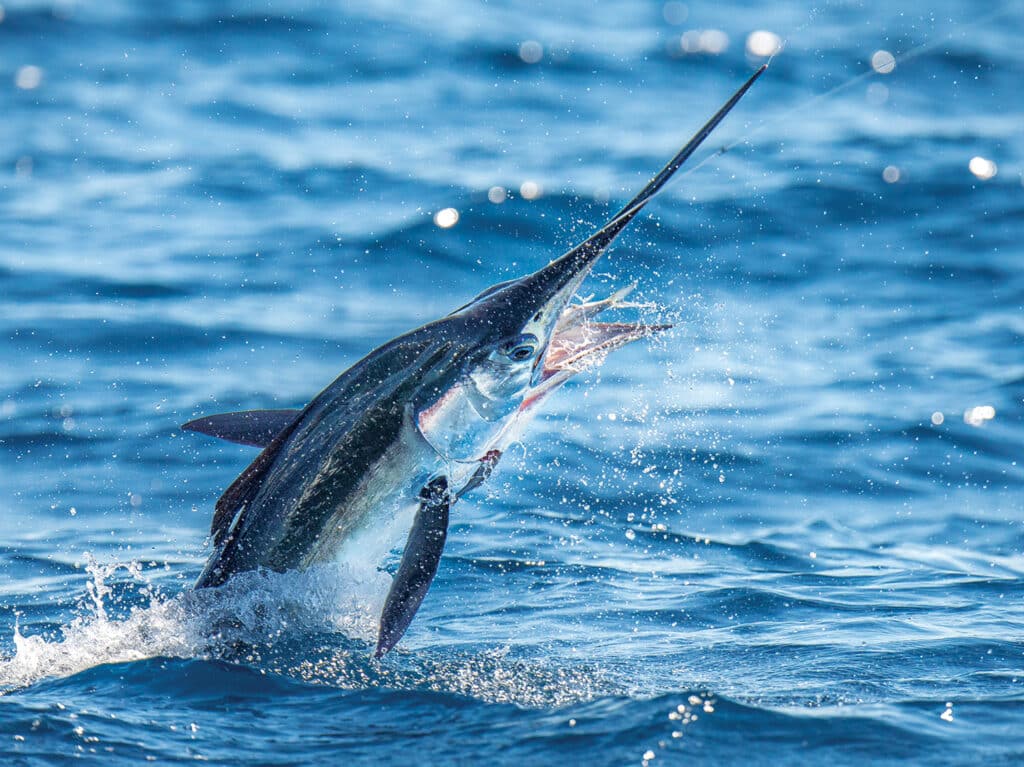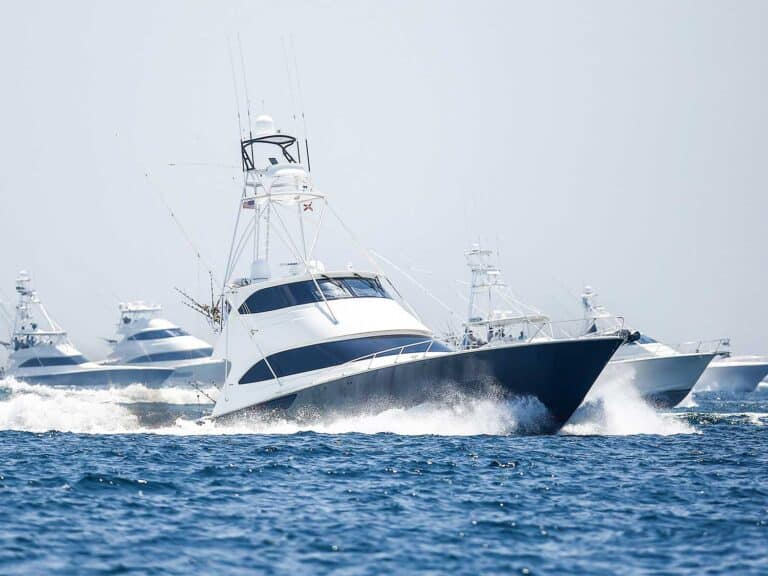
Special delivery: Sign up for the free Marlin email newsletter. Subscribe to Marlin magazine and get a year of highly collectible, keepsake editions – plus access to the digital edition and archives.
The North African nation of Morocco has long been known as a hotspot for white marlin, in terms of numbers but especially size. Several IGFA line-class world records have come from this region, but the behavioral patterns of billfish in the northeastern Atlantic Ocean in general are relatively unknown, with significant gaps in our understanding. Recognizing this knowledge deficit, the International Commission for the Conservation of Atlantic Tunas and its Standing Committee on Research and Statistics has called for a deeper exploration of billfish habitat preferences and their movement patterns in the northeastern Atlantic.
After a successful fishing expedition off the North African nation of Morocco in September 2022, Joan Vernon reached out to marine biologists Derke Snodgrass and me from NOAA’s Southeast Fisheries Science Center to gauge interest in satellite tagging in the region as part of her Adopt-a-Billfish program. Pop-up satellite archival tags measure and record temperature, depth and location estimates of the tagged fish for up to one year, giving insight into how fish use the water column, as well as providing valuable data on migration corridors.
The concept behind the Adopt-a-Billfish program is to enlist the help of anglers who are not only interested in learning more about the billfish they pursue, but also want to play an important role in ensuring their stocks are healthy for future generations. The world’s billfish populations generally are not in good shape, especially in the Atlantic Ocean. This issue is likely not limited to the Atlantic, though, as information on billfish movement in the Pacific and Indian oceans is particularly scarce as well.
Plans took shape swiftly, and over the following year, everything fell into place. The collaboration between the scientists, Vernon’s team of anglers and the boat’s crew paved the way for a remarkable research endeavor. The strategy was meticulous: We would target only white marlin for this study, and only the healthiest fish were selected for PSATs, while exhausted, injured or otherwise unhealthy individuals were released with conventional tags. Every fish was recorded on video, and a snooter device was used to control and protect the fish during the tagging process. A visual assessment was conducted to distinguish between white marlin and roundscale spearfish, primarily based on head and gill cover shapes, known as opercles. To ensure species identification, a fin clip was taken from either the dorsal or pectoral fin for later genetic analysis.
After we arrived in Mohammedia, our team met with Capt. Marco Canu over dinner to strategize for the following day. On the morning of September 15, 2023, the expedition began aboard El Matador, a beautifully maintained 1998 40-foot Gamefisherman, which proved to be the perfect platform for safe fish handling and tagging.
The first two days of fishing were with Laurent Sahyoun, El Matador’s owner and a passionate spor fisherman in his own right. Three fish of the nine or so white marlin that were caught were tagged using satellite tags. The first was estimated to be about 70 pounds; the second and third were both estimated to weigh around 50 pounds. The angling team of Vernon, accompanied by Kim Hermanowski, Bill Pino and Fernando Duarte, arrived on September 16 and was set to begin fishing the following day.
The fishing remained good, with the fourth fish of the trip coming as the second of a doubleheader after the first one broke off while being handled boatside. In total, we were able to implant four additional tags in healthy white marlin that day alone.
Read Next: What makes white marlin such a popular species? We show you why here.
Our fourth day of fishing was a little slow with only one bite in the morning, and the first fish tagged wasn’t until after lunchtime when we tagged two more for the day. Over the next few days we had many other fish caught, but some broke off after getting a legal catch and others had health issues, so we elected not to risk the additional stress of a PSAT tag. We ended up tagging 13 of about 24 caught fish over the six days. The tags are programmed for a variety of durations ranging from 180 to 365 days at large for a total of 2,855 days of monitoring. All tags except the 365-day tag will measure and archive readings of temperature, depth, light and time every three seconds, and transmit summaries of the data via the Argos satellite system. Anyone who happens to find a tag on a fish or washed up on the beach, we offer a $500 reward for its return.
If you are interested in participating in citizen science for highly migratory species, you can request a free conventional tagging kit for use on any billfish or tuna caught in the Atlantic Ocean by emailing [email protected]. The results of this research will be presented at the seventh annual International Billfish Symposium in San Diego in early October 2024.







